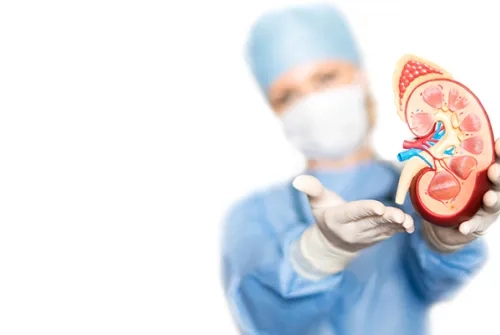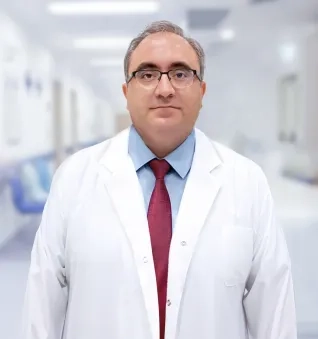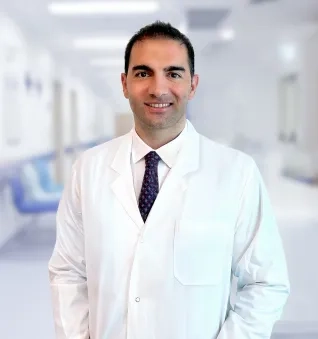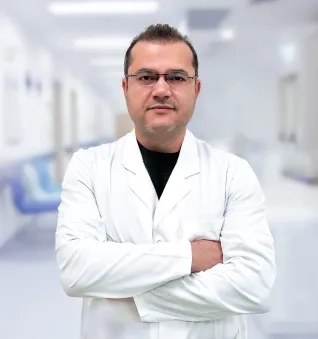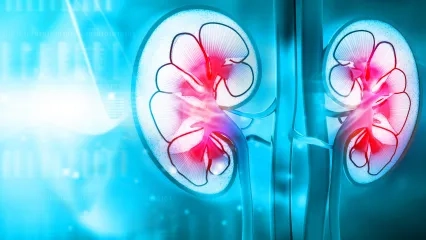Alo Yeditepe
Alo Yeditepe
Tissue Harmony Is Also Important for Success in Kidney Transplant
Approximately sixty thousand people in Türkiye use a treatment method called dialysis due to kidney failure. Approximately one-tenth of them are on the waiting list for a kidney transplant. A total of two thousand nine hundred and twenty-five kidney transplants were performed last year. Six hundred and twenty-six of these were made with kidneys from cadavers. These figures are very small compared to the number of patients in the treatment of kidney failure and on the kidney, transplant waiting list.
What is Peritoneal Dialysis?
Patients with end-stage renal disease continue their lives by cleaning their blood with a hemodialysis machine. A membrane inside this machine performs the function of the kidneys. Another application in kidney failure disease is peritoneal dialysis. It is the disposal of harmful substances in the blood with special solutions applied through special pipes placed in the abdomen. The peritoneum performs the filtration task here. In both methods, there is no ideal cleaning as much as the kidney performs. In addition, it is necessary to stay connected to the machine for about four hours two or three times a week for hemodialysis. In peritoneal dialysis, the patient can do the treatment at home on their own. However, with this method, there is inflammation of the abdominal membrane, which we call peritonitis. Over time, the permeability of the abdominal membrane decreases, and the possibility of effective dialysis disappears. For these reasons, a kidney transplant reveals a more ideal result. It improves the quality of life of the patient and an ideal treatment is provided because the blood is cleaned with a normal kidney.
What Are the Organ Sources for Kidney Transplantation?
The problem with kidney transplants is how to provide the organ. Organ sources are living donors or cadaver donors. A cadaveric kidney is provided by the organ donation of the relatives of people who have died. In cadaver donors, the person needs to reach a hospital with intensive care, and here, despite all kinds of treatment, brain death must have occurred. Before brain death, the donor must not have significant disease. In addition, the relatives of the deceased must approve the donation. When all this is combined, the number of cadaver donors is very low. Therefore, live donors are used in the vast majority of kidney transplants. Live donors can be people with an emotional connection to a relative or person. Ethics committee approval is required for non-relative living donors. The surgical team that will perform the kidney transplant is never involved in the process of finding cadaver organs or detecting live donors. Organ transplant coordinators assigned with these works carry out these preparations. In kidney transplants, blood group compliance is preferred. Blood group compliance increases transplant success. However, it is not required. In cases where there is no compatible donor in their family, live donors can give kidneys to the recipients of the other family, which is more compatible with a system called cross-transplant. Their own patients also receive organs from the other family's living donor.
The Importance of Tissue Compatibility in Kidney Transplantation?
The success of kidney transplants is based on tissue harmony. In cadaveric transplants, the tissue groups of the recipient and donor are studied, and a kidney transplant is performed on the most suitable candidate on the waiting list. The unit of the Ministry of Health makes the cadaver organ distribution. In this way, cadaver organs are provided to reach the patients fairly. In living donors, the more tissue compatibility, the more successful the kidney transplant is. Living donors live normally with a single kidney.
The organ provided is transplanted to the recipient by the organ transplant teams with surgery that takes several hours. Kidney transplant is not performed on the waist, which is the anatomical region where the kidneys are located. The transplant is performed on the main vessels leading to the legs in the groin area. The technical success of all transfer teams in Türkiye is at a high level. Therefore, successful transplants are performed as long as the organ is found.
Life After Kidney Transplantation
Patients who have undergone a kidney transplant use an anti-disposal medication throughout their lives. Because these drugs weaken the immune system, patients who are transplanted are more susceptible to infections. The cost of transplant and post-transplant medications is less than sustaining life with dialysis. The quality of life after a transplant is much better than dialysis treatments.
It is essential to increase the number of kidney transplants, which is the most ideal treatment for kidney failure patients. The problem is the difficulty of providing the organ to be transplanted. The increase in organ donations will contribute to the improvement of this situation. Therefore, informing our people about this issue and increasing their sensitivity to donations will be an important step in solving the problem.
This content was prepared by Yeditepe University Hospitals Medical Editorial Board.
”
See Also
- Fall from Height Led to Kidney Failure, Saved by Sister's Donation
- What is a Liver Transplant, How is it Done? and Who is it For?
- Journey of Hope from Georgia to Turkey: 63-Year-Old Father Donates Kidney to Son
- Birthday Gift Becomes a Gift of Life: Kidney Donation from Husband of 20 Years
- Can Liver Cancer Be Prevented?
- What is Hypoglycemia?
- Common Misconceptions About Kidney Transplantation
- 19 Years Old Davut MİNAZ, Who Lost 45 Kilos in 4 Months, Clung to Life with His Father's Kidney
- Kidney Diseases and Treatment Methods
- What are the Problems Requiring Gallbladder Surgery?
- Gallbladder Surgery is a Necessity, Not a Choice
- What is Organ Donation?
- 10 Questions About Kidney Transplantation
- How Should the Daily Salt Consumption Amount Be?
- Misconceptions About Hypertension
- Chronic Kidney Disease and Treatment Methods
- What is Hypertension?
- Things Wondered About Kidney Transplantation and Organ Donation
- If You Consume More Than 5 grams of Salt...
- The Frequency of Hepatitis Seen in Dialysis Patients Is Decreasing
- 12-Year-Old Tuğba Nur Survived with Transplant
- Excess Protein Does Not Increase Muscle Mass, and It Impairs the Kidneys
- AV FISTULA Should Be Done At The Right Time For Hemodialysis Patients
- Pay Attention to Kidneys in Pregnancy!
- He Held On To Life with His Brother's Kidney
- Recommendations to Strengthen the Immune System
- Kidney Failure Caused by Ear Obstruction
- There is Still a Lot of Misconception About Organ Donation
- He Lost 20 Kilograms in 40 Days for His Wife
- One Out of Every Seven People Has Kidney Disease
- How Should Kidney Patients Be Protected From COVID-19 Coronavirus?
- What is Propolis? How to Use Propolis?
- Improper Nutrition Invites Kidney Failure
- Important Warning from the Expert: “Not Adding Salt to Meals Alone Is Not Enough”
- Are Your Kidneys Really Healthy?
- Being Thirsty in the Heat Tires the Kidneys!
- Liver Cancer (Tumor) and Treatment
- Phytotherapy and Immune System
- What is a Kidney Transplant?
- Hereditary Kidney Diseases Are Underrecognized!
Alo Yeditepe

